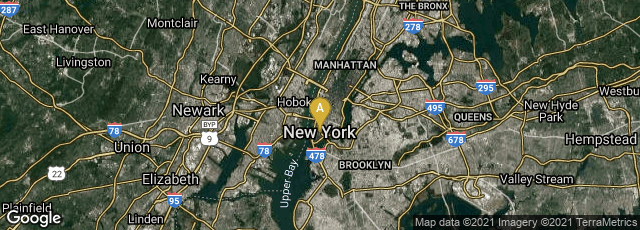

A: Manhattan, New York, New York, United States
Portrait of the four Harper brothers by Mathew Brady, c. 1860. Left to right: Fletcher, James, John, and Joseph.
In the early 19th century there were relatively few steam engines in America, and even fewer small enough to power printing machines. Regarding the introduction of machine printing in New York City, in The Brothers Harper (1965, p. 17) Eugene Exman wrote:
"In the early days at Cliff Street, at least by 1828, horsepower was added to manpower through the purchase of one of the new presses invented and manufactured by Daniel Treadwell of Boston. However, hand presses were not discarded. As late as 1837 twenty-four hand presses were still in use. The Treadwell press was connected by a system of gears to a vertical shaft which extended to the basement. A horizontal beam was then connected to the bottom of this shaft and the far end of the beam a white draft horse was harnessed. As the horse walked steadily in a circular path, the shaft turned the grears upstairs and the presses flapped away as fast as the sheets could be fed to them. In 1833 the new Adams steam press was installed, and the horse was retired to Father Harper's farm on Long Island. For a while he frolicked around the pasture enjoying his new freedom; then old habits asserted themselves. When a seven-o'clock whistle blew he emerged from the barn, went to a solitary tree in the pasture and walked steadily around it till the twelve-o'clock whistle told him he might rest till one, when again he took up his solitary and circular tramp till the six-o'clock whistle released him for the night."
Many printers continued to use handpresses for short run book work through much of the 19th century. In their article, "Making the Magazine", published in 1865, Harpers indicated that by the time of writing they had abandoned the use of handpresses in book production. By that time they printed all their books on Adams Power Presses, and used their higher speed presses for their magazines.